I’d almost given up on salmon cakes. The recipes I’d tried in the past always seemed to deliver dry fish-flavored pucks. It occurred to me that Maryland crab cakes are usually moist with a light crust. Fish and crab behave similarly in the kitchen. Why not try making salmon cakes the same way? As it turns out, the results were pretty good.
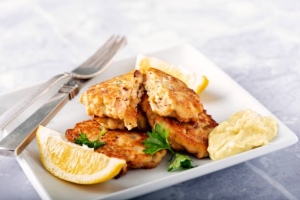
There’s a lot of debate as to exactly what constitutes an authentic Maryland crab cake, but the most basic crab cake is simply lump crab meat mixed with a little mayo and mustard with some kind of starchy binder mixed with egg. The trick to making it delicious is to keep it simple. Preparing salmon in a similar fashion results in an inexpensive, quick meal or an easy appetizer.
This recipe was developed with canned salmon in mind. Be aware that some types of canned salmon contain skin and bones. They are soft and edible but some people dislike the texture. If you prefer no skin or bones, be sure to read the packaging carefully. Look for the labels ‘boneless’ or ‘deboned’. You can of course use any leftover salmon fillets you may have on hand. The rest of the ingredients are usually found around most kitchens, making this an ideal ‘pantry meal’. The resulting salmon cakes are light and moist. They’re great on their own, but some folks prefer theirs with a bit of sauce. Try low FODMAP Tartar Sauce, Basil-Balsamic Mayo or serve with eggs and 2-Minute Hollandaise Sauce.
Feeling a little spicy? Take your salmon cakes to the next level by introducing seasonings and fresh vegetables. Check out the Variation section for how to make a less simple salmon cake.
Low FODMAP Simple Salmon Cakes
Makes 8 small cakes or 2-3 servings.
Ingredients
- 10 oz cooked salmon (2 5 oz cans)
- 6 tbsp gluten-free panko
- 2 tbsp real mayonnaise (Best Foods/Hellmans recommended)
- 1 tsp Dijon mustard
- 1/8 tsp of Worcestershire
- pinch sea salt
- freshly ground pepper to taste
- 1 egg, beaten
- 1 tablespoon avocado oil (or other neutral oil)
- lemon wedges for serving (optional)
Instructions
- Combine the panko, mayonnaise, mustard, Worcestershire sauce, salt, and pepper in a mixing bowl. Drain the salmon well and gently stir in, leaving some large chunks of fish. Add enough egg to be able to form patties that stick together and mix until even. If it becomes too runny, add a little more panko.
- Divide the salmon mixture in half, then repeat 2 more times so that there are 8 equal portions. Form each portion into a small cake about an inch tall.
- Heat a nonstick or cast-iron pan over medium heat. Add the avocado oil. When hot, add the cakes to the pan and cook until golden brown, about 2 minutes per side. Do not overcook. Remove cakes to a plate lined with paper towels.
- Serve hot, with or without sauce, accompanied by lemon wedges.
Troubleshooting
Having trouble with cakes that don’t hold together? Let’s figure out why.
- Too chunky – it’s great to leave larger chunks of fish for texture, but there must be enough fish mashed with the panko and eggs to hold together. Try leaving fewer chunks.
- Too dry – there must be the right amount of beaten egg in order for the mixture to hold together. Add a little bit of egg at a time, mixing well, until you can form a patty.
- Too wet – sometimes there’s too much egg and it becomes too wet to hold shape. In this case add small amounts of panko until the mixture becomes sticky enough to hold together.
- Don’t overdo it – if you wind up adding a lot of egg and panko, this can cause the resulting fish cakes to become dense and heavy. Use a light touch when adding egg or panko.
Variation
- Old Bay Salmoncakes – Try adding 2 tbsp finely diced red bell pepper, 1 tbsp of finely chopped scallions (green parts only), 1 tsp fresh parsley and 1/4 tsp of Old Bay seasoning blend (if tolerated, contains capsaicin).
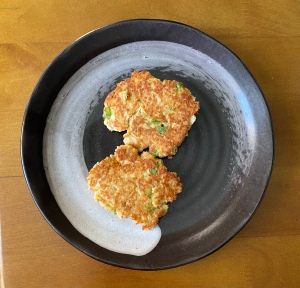

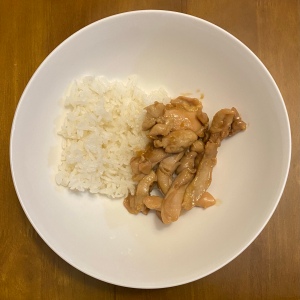
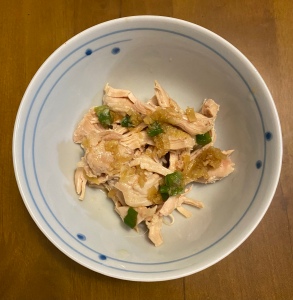


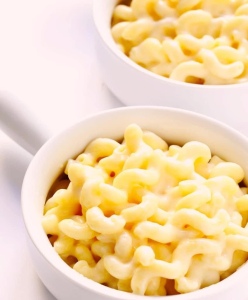
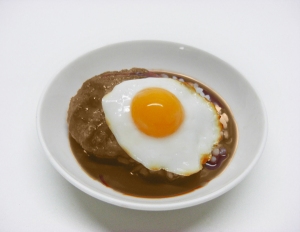
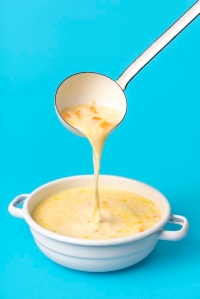

You must be logged in to post a comment.